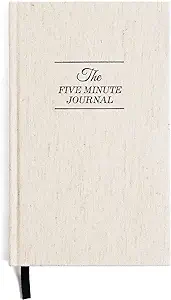4 strategies for teaching creative writing

- Share Article


Tip 1: Crossing out
Tip 2: explicitly teach sentence stems, tip 3: build a planning routine, tip 4: go big or go home.
A blank page can be a fearful thing. As I sit typing this (cocooned in the corner of a bustling coffee shop), it seems a fearful thing to me, too. One by one, words tentatively appear, and yet the whiteness of the page dominates and suffocates the lettered blackness.
It can be an especially fearful thing for our students. Surrounded by the silence of an examination hall, pens scratching cold paper, they sit and stare at the mountainous alps of their booklet. The summit stretches out a great distance away, with so little time to plot and navigate their way.
This is often most keenly felt in creative writing. Being creative on demand is no easy task. The blankness of the paper is only compounded by the apparent blankness of ideas. And still, the clock ticks. In this article, I’ll share four top tips for helping students get better at creative writing, ensuring they always have something ready to fill the whiteness of the page.
One of the biggest conceptual shifts I’ve made in my teaching of creative writing is to focus on crossing out . When we—or our students— cross something out in their writing, what does it imply? It invariably implies a moment of thought and consideration. Is this the best word the gesture suggests, or should I use a different one?
Encouraging students to adopt a crossing-out mentality can be hugely powerful. As we write, I’ll often remind students to look for any words they could cross out, modelling this in my own writing. As I write, I cross out, always being sure to narrate why I’ve crossed something out and what is replacing it .
Of course, in and of itself, crossing out does not guarantee progress. It is a proxy, but a helpful one. Crossing out becomes a concrete and easily understood analogy for the kind of deliberate, sustained crafting that so often characterises the best writing. We don’t just want students to fill up their blank pages; we want them to fill them up with excellent writing .

In order to cross out, students need something to cross out in the first place. This is where repeatable and recyclable sentence stems come into their own. They provide students with snippets of excellent writing they can drag and drop into their response, adapting as necessary.
Students often complain—rightly so—that creative writing can be bereft of content to revise. Sentence stems give them something tangible to rehearse. Teach them in advance, show students how to manipulate them, and get students to experiment on their own.
If the sentence occupies the micro, then students also need a sharp and cohesive macro structure in order to succeed. This is where planning becomes essential.
To help students with this, I explicitly teach and model a particular planning routine that can be adapted and adopted at the start of an examination. This helps students make sure they’re asking the best questions as well as get them into the zone.
This routine always looks the same, sketched out on a single side of A4, and goes like this:
- POV: Students decide the narrative point of view they wish to adopt, which is especially valuable if responding to an image, like many questions require.
- Happy or sad: Students now consider if their point of view is happy or sad. I purposely keep this question very broad, but they may wish to be a little more nuanced in their emotional choice. The key is that they’re thinking about an emotional groove for their piece.
- Why? Now, students can reflect on why their point of view is happy or sad, beginning to build some kind of backstory or narrative thrust to their writing.

At this point, and with some basics covered, students can sketch out an overall structure for their response. At the most basic level possible, I like: First, Next, Next, And Then . What happens first, and then next, and then next, and then how does it end?
Finally, I ask students to consider a big idea they would like to convey within their writing.
With all of this mapped out, students can now begin to write.
Let’s pause for a moment on this idea of a ‘big idea’. It is easy to imagine what this means when teaching a literature text, and we probably spend a lot of time considering it with our classes.
What is Shakespeare trying to accomplish in Macbeth, we might explore? Interwoven with our discussion of the play, we consider Shakespeare’s depiction of power and the way it corrupts, as well as his depiction of kingship or femininity. These are some of the play’s big ideas.
A consideration of the ‘big’ is just as important for a student’s own writing as it is for the literature they study. What is it that they wish to show or explore in their writing? What do they want to do? Helping students to appreciate they can have something to say within their own writing can be truly empowering and liberating.
In my own modelling, I like to return to the concept of time . This unlocks so many interesting directions: transience, time passing, memory, recapturing youth. But it also provides a wealth of imagery for students to leverage. Wrinkled hands, a faded wedding ring, a scratched and crumpled photograph, an item of clothing lovingly stored away at the back of a wardrobe, gathering dust.
This block is currently empty. Please add some content.
A blank page can be a fearful thing, it’s true. But one filled with scribbled writing, well, that can be joyful.
These four strategies will hopefully help your students make sure they turn their blank pages into a piece of writing they can be truly proud of.

Andrew Atherton
Andrew Atherton is an English teacher at a school in Berkshire. He runs the popular blog site Codexterous , which includes a wealth of posts outlining strategies for teaching English Literature and English Language as well as lots of resources.
Recent Posts

How to draw reaction mechanisms in A Level Chemistry
Mastering organic reaction mechanisms is a key part of A Level Chemistry, and it all starts with understanding how to draw them. In this article, chemistry teacher Dan breaks down the different types of mechanisms you'll need to know, from nucleophilic substitution to electrophilic addition, along with the rules for drawing curly arrows.

Your ultimate guide to a successful Parents' Evening
Parents' evening provides a valuable opportunity to engage with your child’s teachers, gain insights into their progress, and address any concerns you or your child may have. Find out how you can make the most of these brief appointments and best support your child using this ultimate guide to a successful parents' evening.

Cold calling in English: Sparking literature discussions in class
Struggling to get your English class talking? Discover why traditional cold calling doesn’t always work in English classrooms and learn simple strategies to encourage meaningful engagement and discussion. Bring your lessons to life with methods that work for the unique dynamics of English classrooms.
Search by Topic
- Behaviour (1)
- Diversity (1)
- Finances (4)
- Inspection and Observation (2)
- Leadership (1)
- Pedagogy (16)
- Planning and Organisation (3)
- Post-16 Options (7)
- Revision and Exams (13)
- Science Teaching (4)
- SEND Teaching (3)
- Study Skills (12)
- Tuition (12)
- University (13)
- Wellbeing (13)
Related Posts

How to teach organic reaction mechanisms
Understanding organic reaction mechanisms is crucial for A Level Chemistry success. In this article, chemistry teacher Thomas shares a step-by-step approach to teaching mechanisms that engages every student. Learn how to move beyond rote memorisation and get your students thinking critically about organic reaction mechanisms.

How I learned to love the mini whiteboard!
Mini whiteboards are a game-changer in the classroom. They allow teachers to quickly assess every student's understanding, enforce accountability, and encourage risk-taking. This article by science teacher Dan explores how these simple tools can boost participation and transform your teaching.
Join Our Community
Sign up to our monthly newsletter to be kept in the loop about new resources, blogs and more.
Our ambition is to guide students from secondary school into their adult life.
- Uni Admissions
- Bursary Scheme
- For Schools
- Revision Resources
- Computer Science
- Find a Tutor
- How it Works
- Teacher Resources
- Information
- Privacy Policy
- Terms and Conditions
- Safeguarding Policies

Inspiring Ink: Expert Tips on How to Teach Creative Writing
The world of creative writing is as vast as it is rewarding. It’s a form of expression that allows the writer to explore different worlds, characters, and narratives – all within the power of their pen.
But what exactly is creative writing and why is it important? Let’s explore the value of creative writing and how to inspire young (or old!) minds to embark on the curious and exciting journey of writing creatively – it’s easier than you think!
What is Creative Writing?
Creative writing, in its simplest form, is writing that goes beyond the bounds of normal professional, journalistic, academic, or technical forms of literature.
It’s characterized by its emphasis on:
- narrative craft
- character development
- the use of literary devices
From poetry to plays, scripts to sonnets, creative writing covers a wide range of genres . It’s about painting pictures with words, invoking emotions, and bringing ideas to life . It’s about crafting stories that are compelling, engaging, and thought-provoking.
Whether you’re penning a novel or jotting down a journal entry, creative writing encourages you to unleash your imagination and express your thoughts in a unique, artistic way. For a deeper dive into the realm of creative writing, you can visit our article on what is creative writing .
Benefits of Developing Creative Writing Skills
The benefits of creative writing extend beyond the page.
It’s not just about creating captivating stories or crafting beautiful prose. The skills developed through creative writing are invaluable in many aspects of life and work.
1. Creative writing fosters creativity and imagination.
It encourages you to think outside the box, broaden your perspective, and explore new ideas. It also enhances your ability to communicate effectively, as it involves conveying thoughts, emotions, and narratives in a clear and compelling manner.
2. Creative writing aids in improving critical thinking skills.
It prompts you to analyze characters, plotlines, and themes, and make connections between different ideas. This process activates different parts of the mind, drawing on personal experiences, the imagination, logical plot development, and emotional intelligence.
3. Creative writing is also a valuable tool for self-expression and personal growth.
It allows you to explore your feelings, experiences, and observations, providing an outlet for self-reflection and introspection. By both reading and writing about different characters in different situations, readers develop empathy in a gentle but effective way.
4. Creative writing skills can open up a host of career opportunities.
From authors and editors to content creators and copywriters, the demand for creative writers is vast and varied. You can learn more about potential career paths in our article on creative writing jobs and what you can do with a creative writing degree .
In essence, creative writing is more than just an art—it’s a skill, a craft, and a powerful tool for communication and self-expression. Whether you’re teaching creative writing or learning it, understanding its value is the first step towards mastering the art.
The 3 Roles of a Creative Writing Teacher
Amongst the many facets of a creative writing teacher’s role, three vital aspects stand out: inspiring creativity , nurturing talent , and providing constructive criticism . These elements play a significant role in shaping budding writers and fostering their passion for the craft.
1. Inspiring Creativity
The primary function of a creative writing teacher is to inspire creativity.
They must foster an environment that encourages students to think outside the box and explore new possibilities . This includes presenting students with creative writing prompts that challenge their thinking, promoting lively discussions around various topics, and providing opportunities for students to engage in creative writing activities for kids .
Teachers should also expose students to a range of literary genres , styles, and techniques to broaden their understanding and appreciation of the craft. This exposure not only enhances their knowledge but also stimulates their creativity, encouraging them to experiment with different writing styles .

2. Nurturing Talent
Nurturing talent involves recognizing the unique abilities of each student and providing the necessary support and guidance to help them develop these skills. A creative writing teacher needs to identify the strengths and weaknesses of each student and tailor their approach accordingly.
This means:
- offering personalized feedback
- setting realistic yet challenging goals
- providing opportunities for students to showcase their work
Encouraging students to participate in writing competitions or to publish their work can give them a confidence boost and motivate them to improve. Furthermore, teachers should educate students about various creative writing jobs and what you can do with a creative writing degree . This knowledge can inspire students to pursue their passion for writing and explore career opportunities in the field.
3. Providing Constructive Criticism
Providing constructive criticism is a critical aspect of teaching creative writing. It involves assessing students’ work objectively and providing feedback that helps them improve .
Teachers should:
- highlight the strengths of the work
- address the areas that need improvement
- suggest ways to make the piece better
Constructive criticism should be specific, actionable, and encouraging . It’s important to remember that the goal is to help the student improve, not to discourage them. Therefore, teachers need to communicate their feedback in a respectful and supportive manner.
In essence, a teacher’s role in teaching creative writing extends beyond mere instruction. They are mentors who inspire, nurture, and shape the minds of budding writers. By fostering a supportive and stimulating environment, they can help students unlock their creative potential and develop a lifelong love for writing.
3 Techniques for Teaching Creative Writing
When it comes to understanding how to teach creative writing, there are several effective techniques that can help inspire students and foster their writing skills.
1. Encouraging Free Writing Exercises
Free writing is a technique that encourages students to write continuously for a set amount of time without worrying about grammar, punctuation, or topic. This type of exercise can help unleash creativity, as it allows students to freely express their thoughts and ideas without judgment or constraint.
As a teacher, you can set a specific theme or provide creative writing prompts to guide the writing session. Alternatively, you can allow students to write about any topic that comes to mind. The key is to create an environment that encourages creative exploration and expression.
2. Exploring Different Genres
Another effective technique is to expose students to a wide range of writing genres. This can include fiction, non-fiction, poetry, drama, fantasy, mystery, and more. By exploring different genres, students can discover their unique writing styles and interests. This variety also offers the chance to expand their writing skills and apply them to various writing formats.
To facilitate this exploration, you can assign writing projects in different genres, conduct genre-specific writing workshops, or invite guest speakers who specialize in different genres. You can also encourage students to critically analyze how different authors approach their work.
3. Analyzing Published Works
Analyzing published works is a powerful way to teach creative writing. This technique allows students to learn from established authors by studying their:
- writing styles
- narrative structures
- use of language.
It also provides a practical context for understanding writing concepts and techniques.
As a teacher, you can select diverse pieces of literature for analysis , ranging from classic novels to contemporary short stories. Encourage students to identify elements they admire in these works and discuss how they can incorporate similar techniques into their own writing.
These techniques for teaching creative writing are effective ways to inspire creativity, encourage self-expression, and develop writing skills. As a teacher, your role is crucial in guiding students through their creative journey and helping them realize their potential as writers.
Creative Writing Workshops and Exercises
One effective method on how to teach creative writing is through the use of targeted workshops and exercises. These interactive sessions can stimulate creativity, foster character development , and help in understanding story structures .
Idea Generation Workshops
Idea generation is a crucial aspect of creative writing. It is the starting point that provides a springboard for writers to explore and develop their narratives. Idea generation workshops can be an interactive and fun way to help writers come up with fresh ideas.
Workshops can include brainstorming sessions , where writers are encouraged to think freely and note down all ideas, no matter how unconventional they may seem. Another method is the use of writing prompts , which can serve as a creative spark.
A prompt could be:
- even an image
Editor’s Note : Encourage children to create a big scribble on a scrap piece of paper and then look for an image in it (like looking for pictures in the clouds). This can be a great creative writing prompt and students will love sharing their writing with each other! Expect lots of giggles and fun!
Character Development Exercises
Characters are the heart of any story. They drive the narrative and engage the readers. Character development exercises can help writers create well-rounded and relatable characters.
Such exercises can include character questionnaires , where writers answer a series of questions about their characters to gain a deeper understanding of their personalities, backgrounds, and motivations. Role-playing activities can also be useful, allowing writers to step into their characters’ shoes and explore their reactions in different scenarios.
Story Structure Workshops
Understanding story structure is vital for creating a compelling narrative. Story structure workshops can guide writers on how to effectively structure their stories to engage readers from start to finish .
These workshops can cover essential elements of story structures like:
- rising action
- falling action
In addition to understanding the basics, writers should be encouraged to experiment with different story structures to find what works best for their narrative style. An understanding of story structure can also help in analyzing and learning from published works .
Providing writers with the right tools and techniques, through workshops and exercises, can significantly improve their creative writing skills. It’s important to remember that creativity flourishes with practice and patience .
As a teacher, nurturing this process is one of the most rewarding aspects of teaching creative writing. For more insights and tips on teaching creative writing, continue exploring our articles on creative writing .
Tips to Enhance Creative Writing Skills
The process of teaching creative writing is as much about honing one’s own skills as it is about imparting knowledge to others. Here are some key strategies that can help in enhancing your creative writing abilities and make your teaching methods more effective.
Regular Practice
Like any other skill, creative writing requires regular practice . Foster the habit of writing daily, even if it’s just a few lines. This will help you stay in touch with your creative side and continually improve your writing skills. Encourage your students to do the same.
Introduce them to various creative writing prompts to stimulate their imagination and make their writing practice more engaging.
Reading Widely
Reading is an essential part of becoming a better writer. By reading widely, you expose yourself to a variety of styles, tones, and genres . This not only broadens your literary horizons but also provides a wealth of ideas for your own writing.
Encourage your students to read extensively as well. Analyzing and discussing different works can be an excellent learning exercise and can spark creative ideas .
Exploring Various Writing Styles
The beauty of creative writing lies in its diversity. From poetic verses to gripping narratives, there’s a wide range of styles to explore. Encourage your students to try their hand at different forms of writing. This not only enhances their versatility but also helps them discover their unique voice as a writer.
To help them get started, you can introduce a variety of creative writing activities for kids . These tasks can be tailored to suit different age groups and proficiency levels. Remember, the goal is to foster a love for writing, so keep the activities fun and engaging .
Have Fun Teaching Creative Writing!
Enhancing creative writing skills is a continuous journey. It requires persistence, curiosity, and a willingness to step out of your comfort zone. As a teacher, your role is to guide your students on this journey, providing them with the tools and encouragement they need to flourish as writers – and most of all – enjoy the process!
For more insights on creative writing, be sure to explore our articles on what is creative writing and creative writing jobs and what you can do with a creative writing degree .
Brooks Manley

Creative Primer is a resource on all things journaling, creativity, and productivity. We’ll help you produce better ideas, get more done, and live a more effective life.
My name is Brooks. I do a ton of journaling, like to think I’m a creative (jury’s out), and spend a lot of time thinking about productivity. I hope these resources and product recommendations serve you well. Reach out if you ever want to chat or let me know about a journal I need to check out!
Here’s my favorite journal for 2024:

Gratitude Journal Prompts Mindfulness Journal Prompts Journal Prompts for Anxiety Reflective Journal Prompts Healing Journal Prompts Cognitive Behavioral Therapy Journal Prompts Mental Health Journal Prompts ASMR Journal Prompts Manifestation Journal Prompts Self-Care Journal Prompts Morning Journal Prompts Evening Journal Prompts Self-Improvement Journal Prompts Creative Writing Journal Prompts Dream Journal Prompts Relationship Journal Prompts "What If" Journal Prompts New Year Journal Prompts Shadow Work Journal Prompts Journal Prompts for Overcoming Fear Journal Prompts for Dealing with Loss Journal Prompts for Discerning and Decision Making Travel Journal Prompts Fun Journal Prompts
Enriching Creative Writing Activities for Kids
You may also like, planner review: roterunner’s purpose planner.
The Best Planners for Moms in 2024
How to be more creative, leave a reply cancel reply.
Save my name, email, and website in this browser for the next time I comment.
- Productivity
- Favorite Journals
